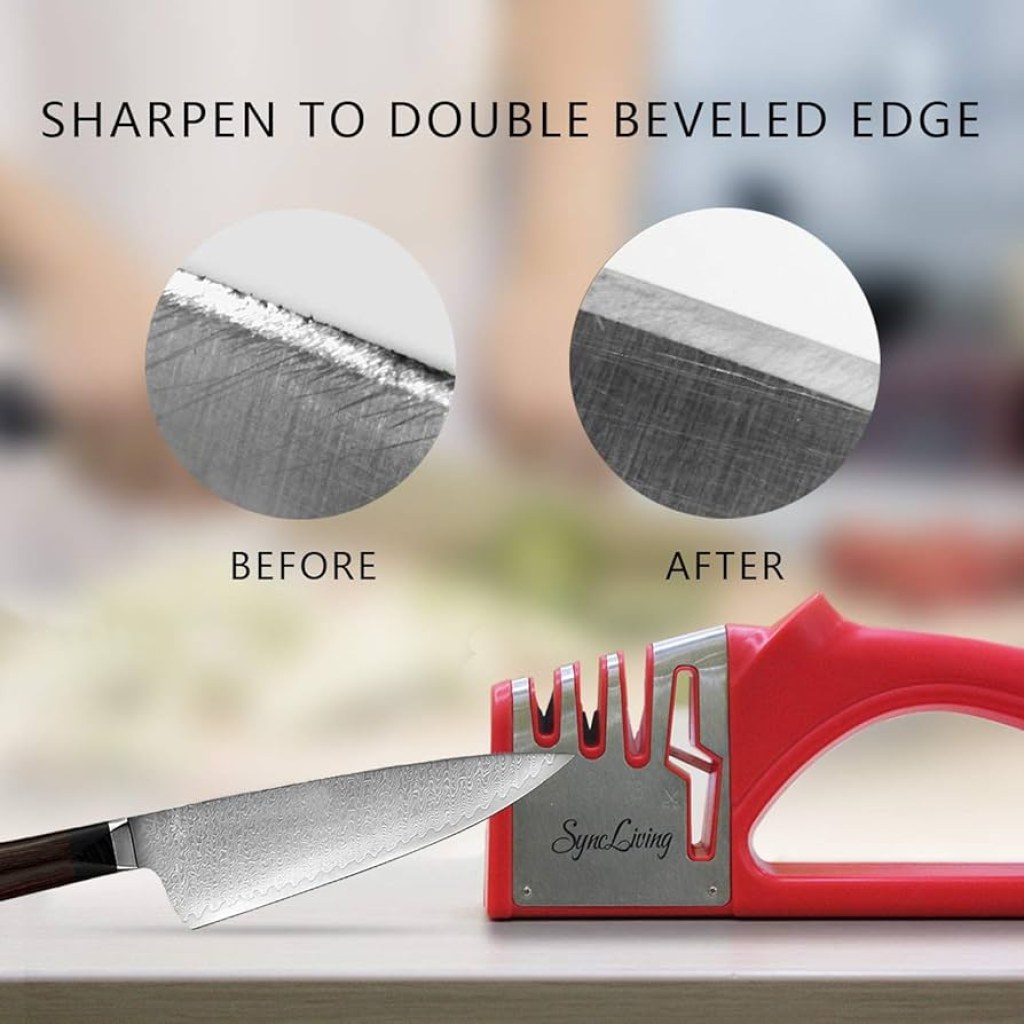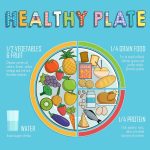Revitalize Your Cooking Experience With The Ultimate Healthy Living Knife Sharpening Solution – Click To Take Action Now!
Healthy Living Knife Sharpening: Enhancing Your Culinary Experience
Introduction
Hello, Readers! Welcome to a comprehensive guide on healthy living knife sharpening. Knives are essential tools in any kitchen, and keeping them sharp is crucial for a safe and enjoyable cooking experience. In this article, we will explore the importance of knife sharpening, the benefits and drawbacks, as well as tips and techniques to maintain sharp blades. So, let’s dive in and discover how you can enhance your culinary skills with healthy living knife sharpening!
1 Picture Gallery: Revitalize Your Cooking Experience With The Ultimate Healthy Living Knife Sharpening Solution – Click To Take Action Now!

What is Healthy Living Knife Sharpening?
Knife sharpening is the process of refining the edge of a blade to ensure optimal performance. Healthy living knife sharpening takes this concept further by focusing on maintaining a clean and toxin-free environment during the process. It involves using natural, non-toxic materials and techniques that not only sharpen your knives but also promote a healthy and sustainable lifestyle.
The Importance of Knife Sharpening

Image Source: media-amazon.com
Properly sharpened knives offer numerous benefits, including:
🔪 Improved Cutting Performance: Sharpened knives allow for precise and efficient cutting, reducing the risk of accidents in the kitchen.
🔪 Extended Lifespan: Regular sharpening helps prolong the life of your knives, saving you money in the long run.
🔪 Enhanced Safety: Dull knives can slip or require excessive force, leading to potential injuries. Sharp knives provide better control and reduce the chances of accidents.
🔪 Better Food Presentation: Sharp knives create clean cuts, enhancing the presentation of your culinary creations.
🔪 Time Efficiency: A sharp knife cuts through ingredients effortlessly, saving you time during meal preparation.
With these advantages in mind, it is crucial to understand the what, who, when, where, why, and how of healthy living knife sharpening.
What: The Process of Healthy Living Knife Sharpening
The process of healthy living knife sharpening involves:
1. Selecting the right sharpening tools, such as honing rods, sharpening stones, or electric sharpeners.
2. Understanding the knife’s edge angle and bevel type to determine the appropriate sharpening technique.
3. Using non-toxic sharpening materials, like natural sharpening stones or diamond-coated sharpeners.
4. Applying the correct sharpening technique, such as honing or grinding, to achieve the desired sharpness.
5. Testing the knife’s sharpness by performing various cutting tasks.
By following these steps, you can ensure that your knives are sharpened in a healthy and eco-friendly manner.
Who: The People Benefitting from Healthy Living Knife Sharpening
Healthy living knife sharpening is beneficial for:
1. Home cooks and aspiring chefs who want to enhance their culinary skills.
2. Eco-conscious individuals who prioritize sustainable and non-toxic practices in their daily lives.
3. Health-conscious individuals who aim to reduce the risk of food contamination by using sharp knives for meal preparation.
4. Professionals in the culinary industry who rely on sharp knives for efficient and precise cooking.
Regardless of your cooking expertise, healthy living knife sharpening can elevate your kitchen experience.
When and Where: Incorporating Healthy Living Knife Sharpening into Your Routine
Healthy living knife sharpening should be a regular part of your culinary routine. Consider the following:
1. When: Sharpen your knives whenever you notice a decline in their cutting performance or every few months for regular maintenance.
2. Where: Choose a clean and well-lit area in your kitchen to perform the sharpening process. Ensure proper ventilation to prevent inhalation of sharpening debris.
By incorporating healthy living knife sharpening into your routine, you ensure that your knives are always ready to tackle any culinary challenge.
Why: The Benefits and Drawbacks of Healthy Living Knife Sharpening
Advantages of healthy living knife sharpening include:
1. Eco-Friendly Approach: Using non-toxic sharpening materials and techniques reduces harm to the environment.
2. Healthier Meal Preparation: Sharp knives minimize the chances of contamination and provide cleaner cuts for fresher and healthier meals.
3. Cost-Effective: Regular maintenance through sharpening extends the lifespan of your knives, avoiding frequent replacements.
However, it’s essential to consider some drawbacks as well:
1. Time-Consuming: The sharpening process requires time and patience, especially for beginners.
2. Skill and Knowledge: Proper sharpening techniques require practice and understanding to avoid damaging the knife.
By weighing these pros and cons, you can make an informed decision regarding healthy living knife sharpening.
How: Techniques and Tips for Healthy Living Knife Sharpening
To sharpen your knives in a healthy and eco-friendly manner, consider the following tips:
1. Choose natural sharpening stones or diamond-coated sharpeners instead of synthetic options.
2. Use honing rods or manual sharpeners for regular maintenance and touch-ups.
3. Maintain a consistent angle while sharpening to achieve a sharp edge.
4. Clean your knives thoroughly before and after the sharpening process to prevent cross-contamination.
5. Store your knives properly in a knife block or sheath to protect the sharp edges.
By applying these techniques and tips, you can ensure that your healthy living knife sharpening routine is effective and safe.
Frequently Asked Questions (FAQs)
Q1: How often should I sharpen my knives?
A1: It depends on your knife usage and cutting tasks, but as a general rule, sharpen your knives every few months for regular maintenance or whenever you notice a decline in their cutting performance.
Q2: Can I use an electric sharpener for healthy living knife sharpening?
A2: Yes, you can. However, ensure that the electric sharpener uses non-toxic sharpening materials and follow the manufacturer’s instructions for safe and eco-friendly sharpening.
Q3: What’s the difference between honing and sharpening?
A3: Honing is the process of realigning the blade’s edge, while sharpening involves removing material to create a new edge. Honing is a quick touch-up technique, while sharpening is done less frequently for more significant blade maintenance.
Q4: Can I sharpen serrated knives?
A4: Yes, you can sharpen serrated knives using a tapered diamond rod or a sharpening stone designed for serrated edges. However, it requires more care and precision compared to sharpening straight-edged knives.
Q5: Are there any alternatives to sharpening stones for healthy living knife sharpening?
A5: Yes, alternatives include ceramic sharpeners, diamond-coated sharpeners, or sandpaper attached to a flat surface. Ensure that these alternatives are made from non-toxic materials and suitable for your knife type.
Conclusion
In conclusion, healthy living knife sharpening is a vital practice for any cooking enthusiast. By maintaining sharp knives through eco-friendly techniques, you can enhance your culinary experience, promote sustainability, and ensure safe meal preparation. Remember, sharp knives not only improve your cutting performance but also contribute to healthier meals and a greener environment. So, embrace healthy living knife sharpening and elevate your cooking skills today!
Final Remarks
Healthy living knife sharpening is an essential aspect of maintaining your kitchen tools and enhancing your cooking experience. However, it is crucial to proceed with caution and follow proper techniques to avoid accidents or damaging your knives. If you’re unsure about sharpening your knives yourself, consider seeking professional assistance. Remember, a properly sharpened knife is a valuable investment in your culinary journey. Happy cooking and stay sharp!
This post topic: Wellness Insights

